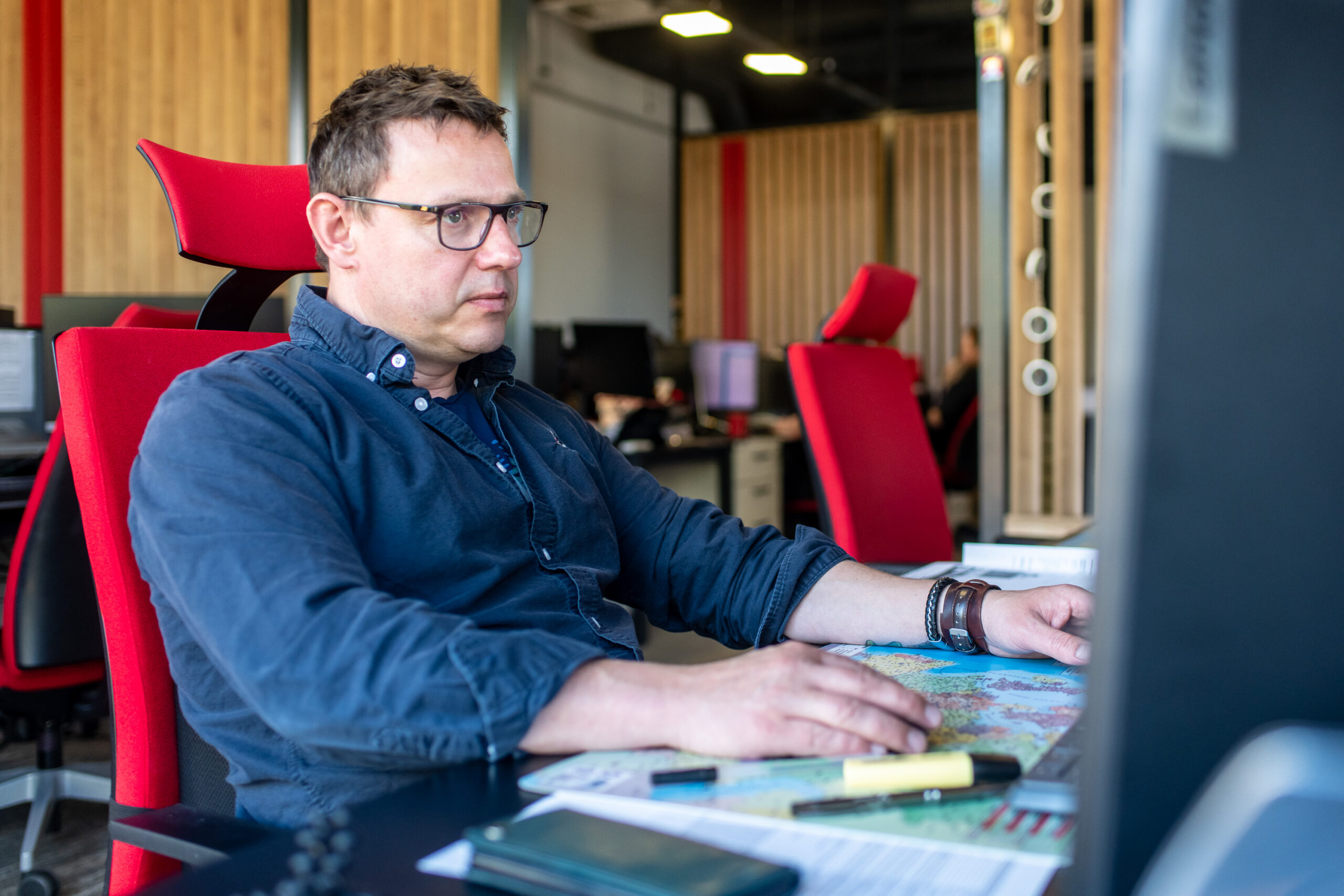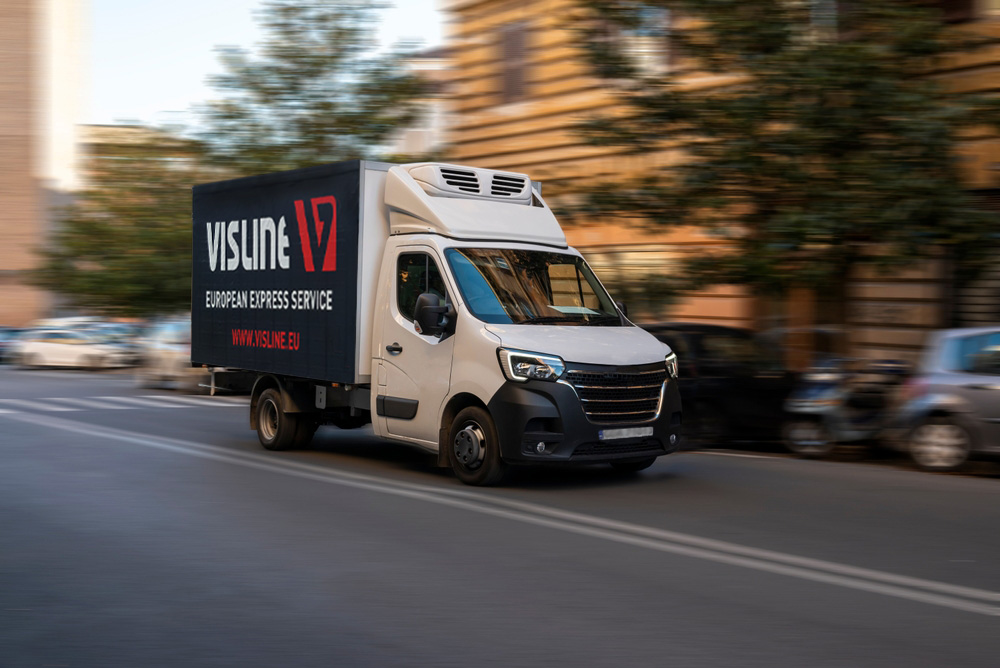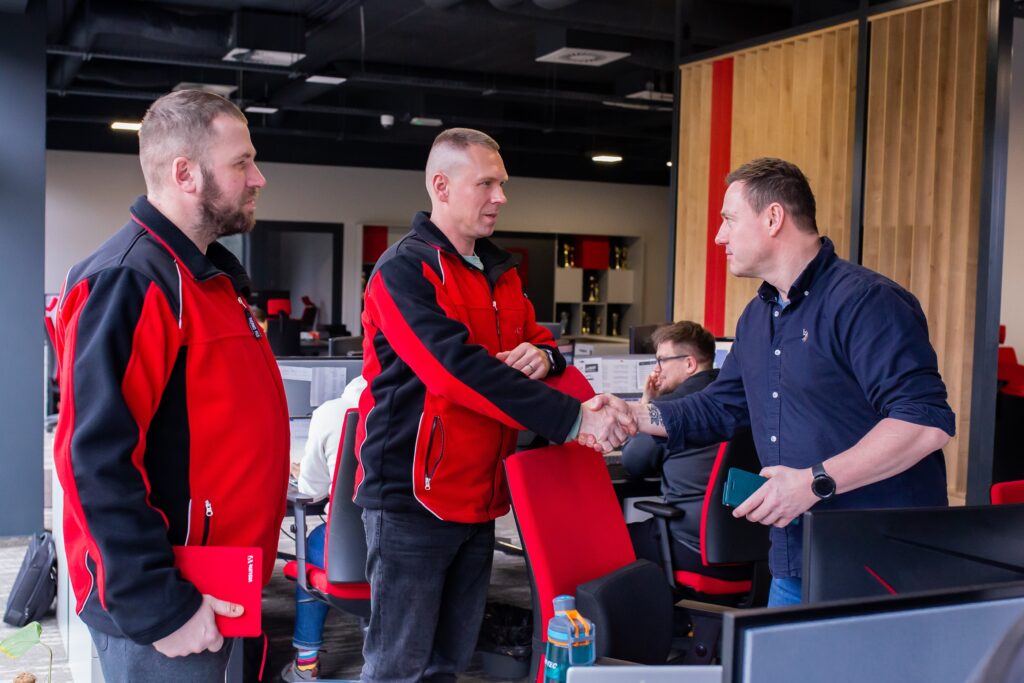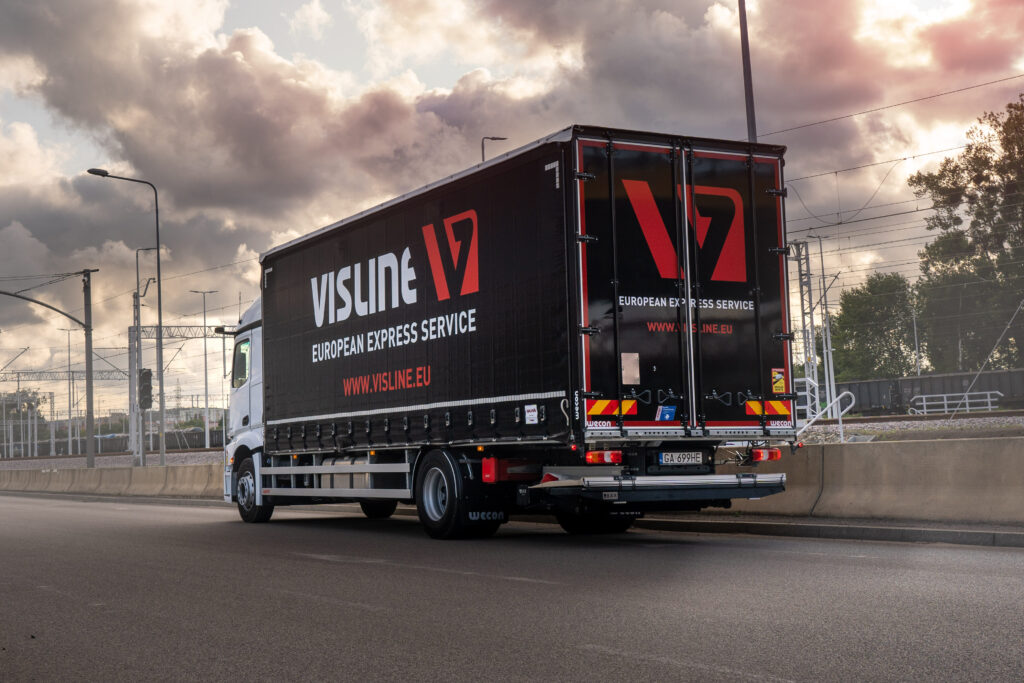What can go wrong? The most common mistakes in pharmaceutical transportation and how to avoid them.
Łukasz Przytarski | Zuzanna Malek
Published 25.07.2025
12 min reading time

Pharmaceutical transport, and more broadly, pharmaceutical logistics, is an area where the margin for error is practically non-existent. A single temperature deviation, delay on the route, or lack of proper documentation can render a product worth millions of euros useless. How can this be prevented? What does professional temperature-controlled transportation look like, step by step?
An interview with Łukasz Przytarski, Express Freight Manager at Visline, conducted by Zuzanna Malek, Marketing Project Manager.
Table of Contents:
Behind the scenes of the work, contingency plans, and most common mistakes are discussed by Łukasz Przytarski, Express Freight Manager at Visline. Our interviewee is responsible for coordinating express deliveries of medicines, clinical trial components, vaccines, and biological materials (see case study). In many projects, both temperature (e.g. +2 to +8°C, 15–25°C, and sometimes deep freezing ranges) and delivery time are crucial. When the manufacturer calls and says “today for tomorrow,” organizational efficiency, fleet availability, and readiness to operate in express bus mode come into play.
Does summer mean higher risk in pharmaceutical transport?
Zuzanna Malek: Let’s start with a seasonal question. It’s summer. Does the demand for temperature-controlled transport increase during this period, and does the risk of deviations realistically rise?
Łukasz Przytarski: Intuitively, one might think so, but practice shows otherwise. In pharmaceutical transport, there is no seasonality in safety. Regardless of the season, we must maintain the required parameters – whether it’s +2–8°C, 15–25°C, sub-zero temperatures, or even deep freezing for research projects. The fleet, procedures, and monitoring work year-round. Summer only reminds everyone how important temperature control is – we must always be mindful of this.
Most common sources of risk in temperature-controlled transport
Z.M.: Let’s get to the point. What are the most common things that can go wrong in this type of transport?
Ł.P.: The list is long, so let’s break it down into categories. The most common sources of risk are:
- Human factor – incorrect setting of the refrigeration unit, wrong temperature range entry, carelessness during loading (e.g., doors open for too long, lack of proper sealing in the cargo space).
- Technical failures – damage to the refrigeration system, sudden vehicle breakdowns, lack of stationary power supply during transfers.
- Improper primary or secondary packaging – lack of qualified containers, improper cooling inserts, lack of separation between temperature zones.
- Non-compliance with ADR requirements (when the product has both pharmaceutical and hazardous chemical properties) – improper labeling, missing documents.
- Communication gaps – the manufacturer didn’t provide temperature sensitivity information, the forwarder didn’t pass instructions to the driver, no contact in case of delays.
- Underestimating time – traffic jams, border controls, driver rest periods, delays at ramps. The longer the load stands, the greater the risk.
- No contingency plan – one vehicle on the route, no quick replacement in case of a breakdown.
That’s why scenario-based thinking is our standard. What if the vehicle breaks down? What if the logger shows an upward temperature trend? What if the client asks to extend the delivery window? We react before the problem gets out of control.
Plan B: Redundancy, quick response, and replacement fleet
Z.M.: Do you always apply a contingency plan, or only for very valuable cargo?
Ł.P.: We always have a response scenario, but its scale depends on the value and criticality of the cargo. For research samples, clinical trial materials, or expensive experimental drug batches, we use redundancy – e.g., a second refrigerator keeping a reasonable distance or a ready replacement at an intermediate hub. For standard shipments, we rely on continuous temperature and location monitoring. If anything deviates from the norm, we engage the backup fleet. Our target response time in the European region often falls within 1–2 hours of the decision.
Mistakes on the producer’s side – how to avoid them
Z.M.: And what about the preparation of the shipment at the producer’s side? What are the most common mistakes before pickup?
Ł.P.: The most basic yet critical things: choosing the wrong thermal container, failing to pre-cool cooling inserts, mixing products requiring different temperature ranges, lack of additional protection for products sensitive to shocks. If the product also has an ADR classification – proper labeling and documentation are required.
The key is early communication: before loading, we discuss the temperature range, exposure time, type of passive or active packaging, and required loggers with the client.
Checklist for the loader (in short):
- Confirm the required temperature range and tolerance for deviations.
- Check the qualification and condition of thermal packaging.
- Prepare documentation: product specification, transport instructions, ADR (if applicable).
- Include calibrated loggers (or arrange their installation by the carrier).
- Minimize exposure time of the cargo outside the controlled zone.
Financial and quality consequences of improper transport
Z.M.: How significant can the losses be when something goes wrong?
Ł.P.: In pharmaceutical transport, the cost of the physical goods is only part of the risk. There is also the value of clinical research, R&D team time, registration, and documentation. One episode of temperature out of range can result in a batch being withdrawn or requiring requalification. In extreme cases: disposal. This not only hits the client’s budget – it may delay research or patients’ access to therapies.
Cost pressure vs. safety – where is the limit?
Z.M.: Everyone wants to optimize costs. How can we avoid cutting the branch we’re sitting on?
Ł.P.: We understand our clients’ budgets and look for efficiencies – consolidations, combining routes, planning returns. But there are non-negotiable elements: temperature monitoring, calibrated loggers, trained drivers, serviced aggregates, door and seal control, 24/7 duty, alarm procedures. You can optimize the route; you can’t skip control. It’s cheaper without a logger only until the first complaint.
How to choose a pharmaceutical transport partner
Z.M.: What questions should a manufacturer ask before entrusting their product transport to you (or anyone)?
Ł.P.: I recommend treating this as an audit. Starting questions:
- What quality and compliance certifications do you have (e.g., GDP, ISO, internal audits)?
- What experience do you have with transporting medicines, vaccines, clinical materials? Please provide examples or references.
- How does your real-time shipment monitoring work? Does the client have online access?
- What contingency plans do you have for refrigerated unit or vehicle breakdowns during transport?
- How quickly can you deploy a replacement vehicle in the EU?
- Do you provide express bus transport for urgent shipments?
- How do you manage temperature documentation and access to logger reports?
- Are your drivers trained in handling pharmaceutical and ADR cargo?
- Do you have 24/7 operational duty?
- What’s your procedure for reporting deviations and CAPA (Corrective and Preventive Actions)?
Technology in the service of pharmaceutical cargo safety
Z.M.: How much does technology help in all of this?
Ł.P.: A lot. Today’s systems allow for simultaneous GPS and temperature monitoring. We can set alert thresholds (e.g., +7.5°C for the +2–8°C range) before the limit is exceeded. Data is sent to the cloud and archived – during GDP audits, clients can download temperature reports from the entire chain. We are increasingly using multi-point sensors (front/back/above the doors), which show the gradient and help assess the risk with frequent openings.
Planning vs. express transport
Z.M.: Are orders more planned in advance, or do you often get “rush” orders?
Ł.P.: For us, the ideal preparation time is 2-3 days. That’s when we can set the temperature, packaging, route, time windows, and documentation requirements. In reality: a call today, loading today. That’s why Visline maintains an express bus transport segment, which allows us to pick up shipments almost immediately and deliver them in priority mode, even cross-border.
Documentation and tracking post-delivery
Z.M.: What happens after unloading? This process doesn’t always end there.
Ł.P.: Exactly. The client needs the full trace: logger reports, temperature confirmations, stop times, scanned signed documents (CMR, protocols, calibration certificates). Sometimes it takes longer to complete the documents than we’d like. We are working on improvements – automatic data retrieval from devices and faster document flow.
In pharmaceutical transport, especially for deliveries to large hospitals with complex infrastructure, the key logistical challenge is not only delivering the shipment but also quickly and effectively finding the person who requested the pickup. Often, the cargo – e.g., a high-value medicine or an urgent lab sample – must go directly to a specific doctor or specialist.
In this situation, the driver cannot simply leave the package in the warehouse or at reception – they must hand it directly to the recipient. This requires moving through a large hospital complex, often with many buildings, departments, and floors. Finding the right person can be time-consuming, especially if they don’t answer the phone, are in the operating room, conducting consultations, or changing location during the transport.
In practice, the driver must be not only punctual but also flexible, patient, and skilled in interpersonal communication. Often, contacting hospital staff, getting information from receptionists, nurses, or registries is necessary to determine the person’s location. Any delay can have serious consequences – especially when the shipment contains life-saving drugs, temperature-sensitive preparations, or materials needed for surgery.
Therefore, pharmaceutical transport at this level requires not only precise route and delivery time planning but also excellent on-site organization – including the ability to quickly find the person requesting the delivery in a dynamic and complex hospital environment.
Visline’s Golden Rules for Pharmaceutical Transport:
- Route planning and time buffer verification (borders, safe parking areas, driver rest).
- Verification of temperature range and equipment before loading.
- Calibrated, active temperature monitoring with alerts.
- 24/7 duty for long-distance routes and critical cargo.
- Ready replacement vehicle / substitution scenario.
- Double refrigeration option for high-value or time-critical projects.
- Strict communication between forwarder, dispatcher, driver, and client.
- Full documentation trail after delivery (reports, loggers, confirmations).
Trends: What has COVID changed and what comes next?
Z.M.: Did the pandemic change anything permanently?
Ł.P.: Absolutely. The global vaccine distribution showed the scale of the need for temperature-controlled transport. Many producers have systematized temperature requirements, and logistics operators – like us – accelerated investments in technology and procedures. The growing trend is still visible: more biological products, advanced therapies, and personalized medicines. This means more orders requiring dedicated service.
Summary
Z.M.: Łukasz, thank you very much for sharing your valuable insights and experience. It’s extremely important that everyone involved in this process is aware of the risks and challenges that may arise, and how to minimize them.
Ł.P.: Thank you for inviting me to the conversation. I hope our insights will help improve the quality and safety of pharmaceutical transport. The changes in this area are key, especially considering the growing requirements and advanced technologies in the pharmaceutical industry.
FAQ for Pharmaceutical Producers and Transport Companies
- What standards should a transport company meet when transporting medicines?
- The company must comply with applicable pharmaceutical transport standards and regulations such as GMP (Good Manufacturing Practice) and GDP (Good Distribution Practice), which ensure medicines are stored and transported under appropriate conditions (e.g., temperature, humidity, transport time).
- What documents are required when transporting medicines?
- Required documents include quality certificates, documents confirming compliance with storage requirements, transport documentation (e.g., waybills, delivery proofs), and temperature chain documentation if required.
- What to do in case of delay or delivery error?
- Contact the carrier and the person responsible for picking up the goods immediately. In case of delay, it’s crucial to take quick corrective actions, such as securing alternative transport or re-scheduling the delivery. All discrepancies must be documented and reported to the appropriate individuals.
- How to ensure proper temperature maintenance during transport?
- Use appropriate refrigerated vehicles or temperature monitoring devices to ensure constant control of storage conditions. For temperature-sensitive medicines, it’s important to document every stage of transport and check the temperature at each stage of delivery.
- What to do if the medicine is damaged during transport?
- Report the damage to the transport services and the medicine manufacturer immediately. Depending on the nature of the damage, further actions will be taken by the appropriate personnel responsible for the quality and safety of the medicines. This may include returning the goods, replacing them, or taking other corrective actions.
- Is temperature-controlled transport more expensive in summer?
- Not necessarily. Stable procedures and effective temperature control are more important than the season.
- Does the manufacturer need to have their own loggers?
- No – we can provide them. It’s essential that the data is reliable and accessible for audit.
- How quickly can the client receive the temperature report after delivery?
- Typically within 24-48 hours, for critical projects – faster, depending on the devices used.
- Can mixed cargo (different temperature ranges) be transported together?
- Yes, but it requires zoning and/or qualified passive packaging. Each case is evaluated individually.
Are you working in the pharmaceutical, biotechnology, or distribution sector and looking for a partner who understands the importance of quality, time, and temperature compliance? Talk to us.
Interested in cooperation?
We will prepare a route analysis, equipment selection, and contingency plan tailored to the value of your cargo.







